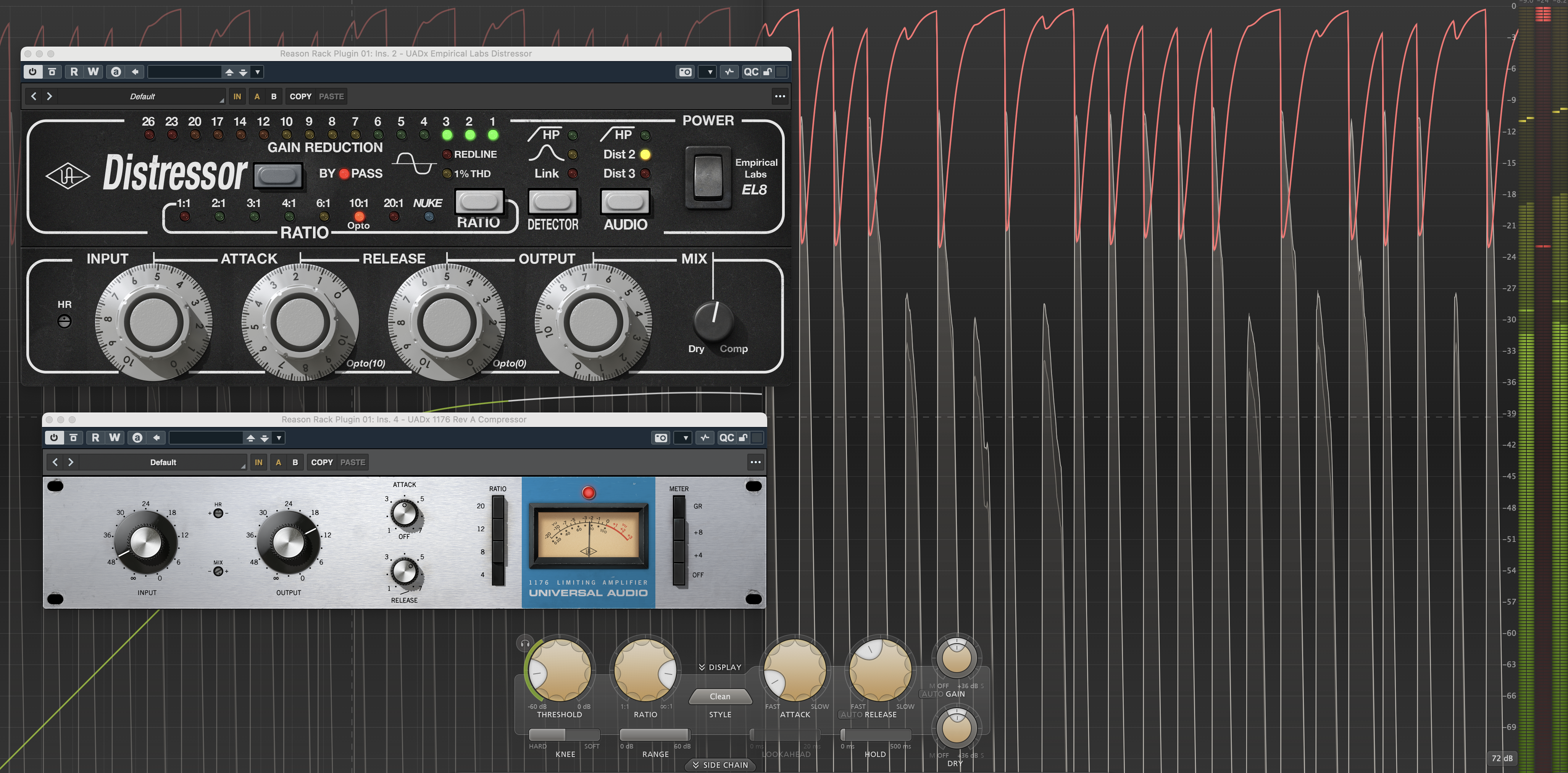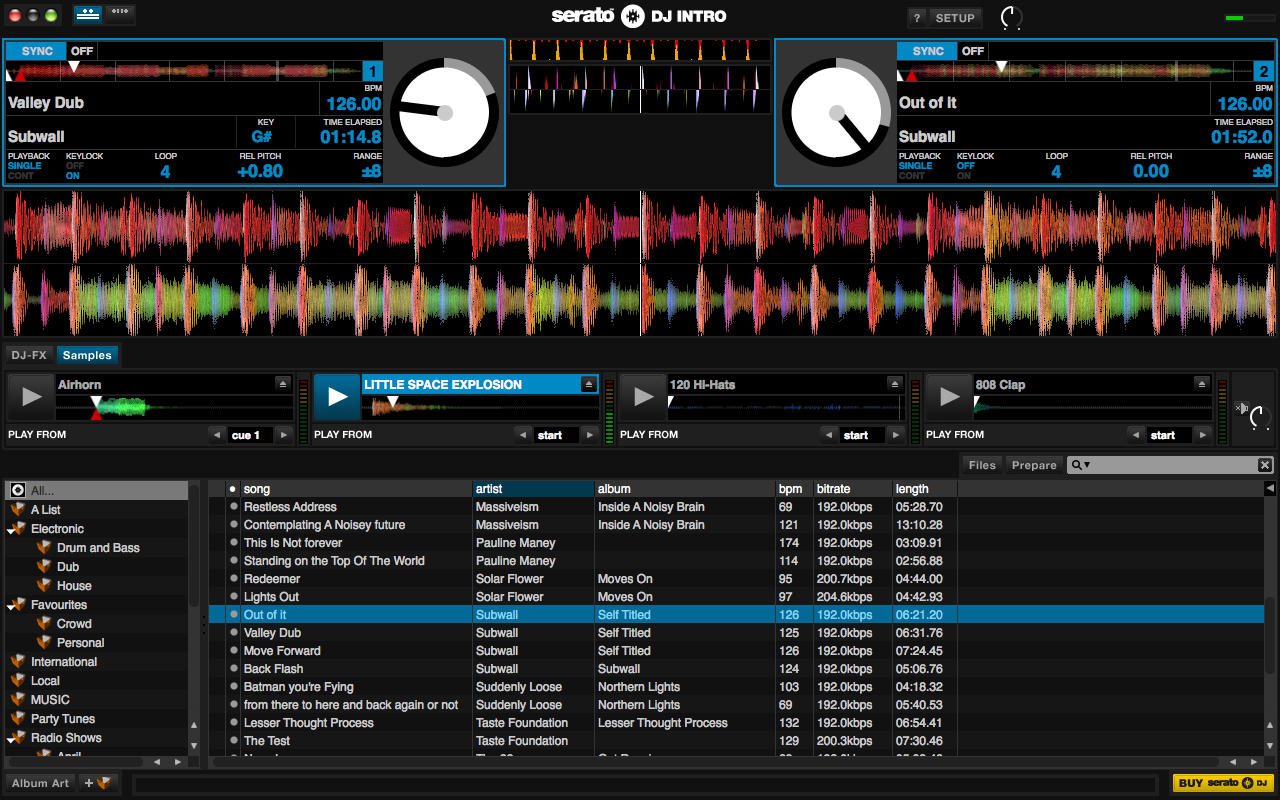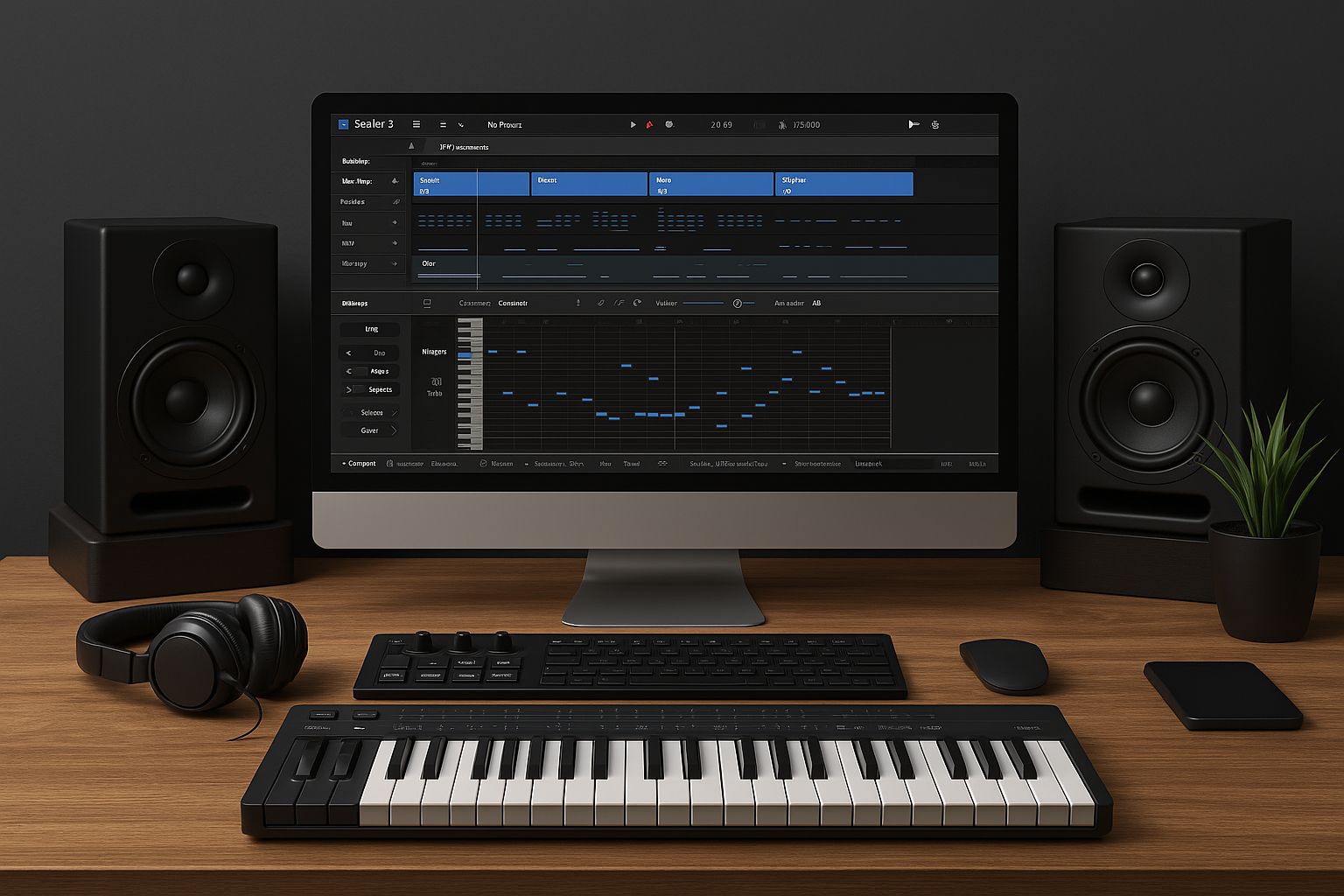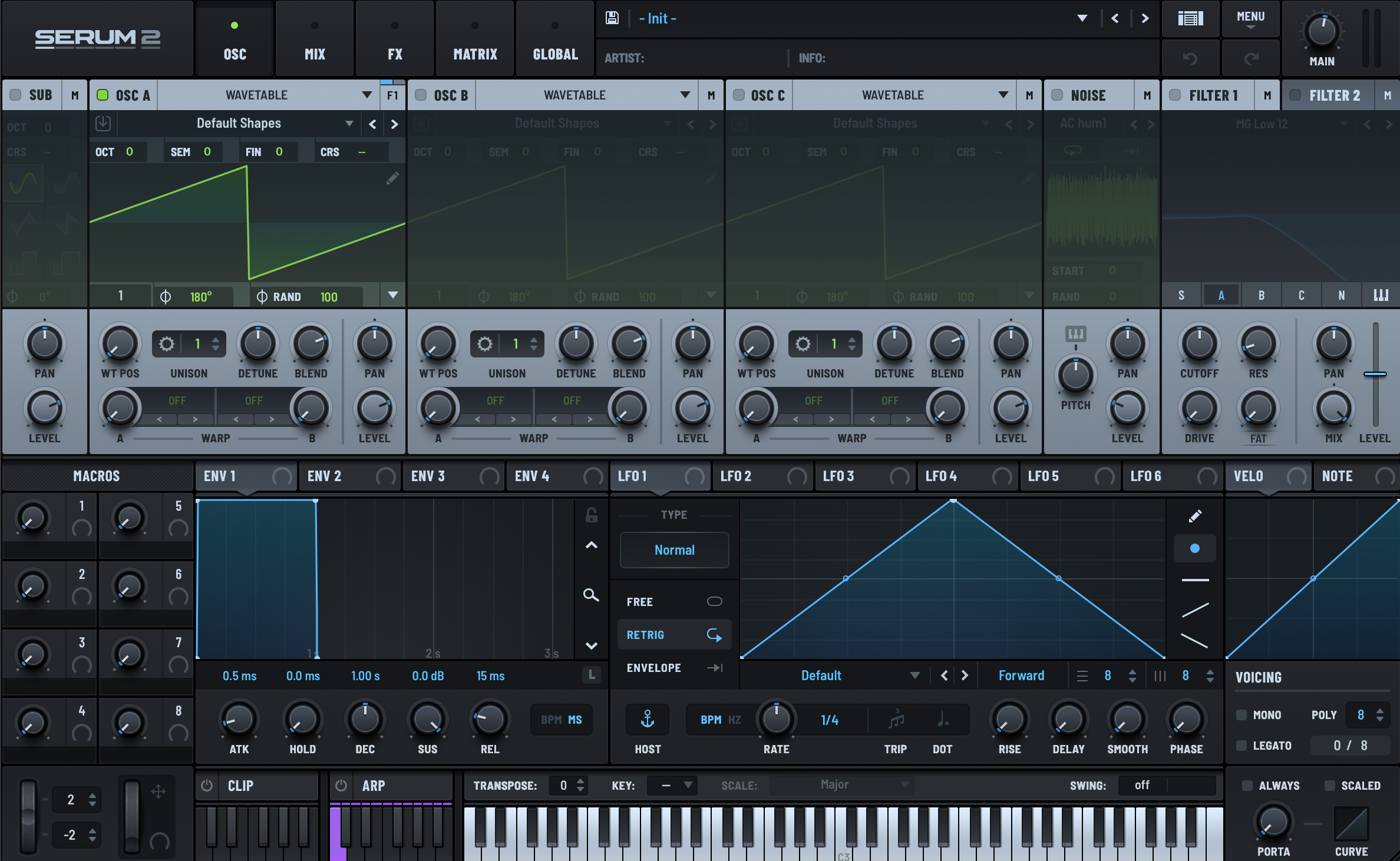
Electronic Dance Music thrives on energy, rhythm, and drums that hit hard. For producers chasing that big, professional drum sound, mastering parallel compression—also known as New York Compression—is essential. This powerful mixing technique blends compressed and uncompressed signals, giving your drums extra punch, clarity, and depth without losing dynamics.
In this guide, we’ll break down exactly what parallel drum compression is, explain how and why it works so well in EDM, and walk you through the best techniques to incorporate it into your tracks. By the end, you’ll have the skills to create drum mixes that deliver maximum impact every time.
Parallel compression, commonly known as New York Compression, is an essential audio processing technique used by producers to achieve powerful, detailed mixes. In parallel compression, a dry (uncompressed) audio signal is duplicated, and one copy undergoes aggressive compression. By blending this heavily compressed signal back into the original, producers enhance punch, sustain, and perceived loudness without sacrificing the natural dynamics or transient clarity crucial to electronic music.
Unlike standard downward compression—where loud peaks are reduced to narrow dynamic range—parallel compression often behaves more like upward compression, bringing quieter elements forward to create a fuller, richer sound. This method preserves the initial transient impact of the dry signal while layering in the depth and density from the compressed signal, resulting in greater clarity, detail, and sonic control.
The core strength of parallel compression lies in balancing processed and unprocessed signals. Producers typically apply heavier compression settings to the parallel channel than they would directly on the main track. This aggressive approach allows specific characteristics such as increased sustain and body to be amplified. The uncompressed channel maintains the natural transient definition and dynamic authenticity, especially crucial for drum and percussion elements. Additionally, parallel compression frequently involves routing audio through dedicated buses, enabling independent EQ and further processing. This setup offers producers precise control over tone and texture, making parallel compression an indispensable tool in the EDM workflow.
Drums in electronic music are defined by sharp transients, powerful hits, and dynamic energy. While traditional compression can control dynamics, directly compressing drum tracks often risks diminishing their essential punch, resulting in flattened, lifeless sounds.
Parallel compression offers an effective solution to these limitations. By blending an uncompressed drum signal with a heavily compressed duplicate, producers preserve critical transients, ensuring drums maintain their initial impact. The parallel compressed signal then enhances sustain and fullness, making drums sound powerful, detailed, and present in the mix without compromising their natural dynamics.
This approach not only increases perceived loudness but also helps unify the different elements of a drum kit, creating a cohesive, polished sound ideal for electronic dance music.
Drums are the driving force behind Electronic Dance Music, setting the rhythm, energy, and groove of every track. With EDM's typically dense mixes—packed with layers of synths, basslines, and effects—it’s crucial that drum sounds cut through clearly and powerfully.
Parallel compression is a go-to technique for achieving these sonic goals. It provides drums with enhanced punch and definition, making each beat hit with clarity and strength. By blending compressed and uncompressed signals, parallel compression amplifies the sustain and body of kicks, snares, and percussion, creating richer, fuller textures.
This approach boosts the overall loudness and presence of drums without introducing unwanted distortion or losing dynamic integrity. Additionally, parallel compression helps unify the different drum elements, giving the entire kit a cohesive and polished sound. Critically, the original transients remain intact, ensuring rhythmic precision and clarity.
For EDM producers looking for professional, impactful drum sounds, parallel compression is an essential tool for delivering both power and detailed sonic character.
Parallel compression can be accomplished with virtually any compressor plugin, but certain tools are especially popular among EDM producers due to their unique sonic qualities and effectiveness on drums. The UAD 1176 is prized for its fast attack, punchy dynamics, and aggressive harmonic character. The dbx 160 delivers gritty, impactful compression ideal for parallel drum buses. The API 2500, known for versatility and punchy clarity, works exceptionally well across various parallel applications. FabFilter Pro-C 2 offers transparent compression with flexible styles and a convenient built-in mix knob. For producers looking for intense character, Soundtoys Devil-Loc Deluxe provides aggressive compression and gritty ambiance, perfect for creative drum effects. Additionally, OTT—a staple in EDM production—is popular for its extreme, multiband compression, often used in parallel for an instantly powerful sound.
Most DAWs' native compressors, including Ableton Live's Compressor and Glue Compressor, Logic Pro's Compressor, FL Studio's Fruity Compressor, and Cubase's Compressor, also achieve excellent results. DAWs themselves provide crucial features for parallel compression, such as auxiliary (return) tracks for routing signals easily, send controls for quick parallel processing setups, and built-in dry/wet mix knobs within plugins for seamless blending. Ableton Live’s Audio Effect Racks further enhance this process, allowing intricate parallel setups within a single track, offering unmatched flexibility and creative control.
For achieving powerful and impactful drum sounds in EDM through parallel compression, several compressor plugins are highly regarded by producers and engineers. Here are some of the best options, drawing from the research:
Classic Analog Emulations:
Modern and Versatile Options:
Free and Popular Choices:
DAW Native Compressors:
When choosing a compressor for parallel drum compression in EDM, consider the specific sonic characteristics you want to achieve. Do you need aggressive punch, subtle thickening, or added character and grit? Experimenting with different plugins and their settings will help you find the perfect tool to elevate your drum tracks.
Many renowned EDM producers rely on parallel compression to achieve their signature drum sounds. While specific techniques and settings can vary, the underlying principles remain consistent. Andrew Scheps, a highly respected mixing engineer who has worked on numerous electronic music tracks, is a strong advocate for parallel processing, often employing it to add density and impact without sacrificing transients. Chris Lord-Alge, known for his powerful and punchy mixes across various genres, including rock and pop with electronic elements, utilizes parallel compression on drums by sending the drum signal to a separate set of channels with a stereo compressor, often favoring unlinked compressors and adding EQ to the compressed channel to further shape the sound.
Examining tutorials and breakdowns from established EDM producers on platforms like YouTube reveals various approaches. Many producers demonstrate setting up auxiliary tracks with heavily compressed signals, often using fast attack and release times, and then subtly blending this compressed layer with the original drums to add weight and energy. Some favor specific plugins known for their character, like the UAD 1176 or dbx 160, while others achieve excellent results with their DAW's stock compressors. A common theme is the aggressive use of compression on the parallel channel, often aiming for significant gain reduction, followed by a careful and often subtle blending process to enhance the overall drum sound without making it sound overtly compressed. The specific choices of attack, release, and ratio often depend on the desired rhythmic feel and the characteristics of the individual drum sounds being processed.
Here's a clear and practical guide for setting up parallel drum compression using two common methods—the send method (auxiliary track) and the plugin mix knob method—in your DAW.
Create a Return Track (Cmd+Alt+T or Ctrl+Alt+T).
Insert a compressor (Ableton Compressor or Glue Compressor).
Use the drum track’s Send control to route signal to the Return Track.
Set the Send to "Pre" to ensure consistent level.
Compressor settings: Fast attack (1-10ms), fast release (20-100ms), high ratio (10:1+), threshold for 6-12dB reduction.
Blend the compressed signal into the mix using the Return Track’s fader.
Select drum track(s) and open Mixer (Y).
Create a new Auxiliary track by assigning an empty Send slot to a new bus (e.g., Bus 1).
Insert Logic's Compressor on the Aux track.
Set the send to pre-fader and adjust send levels.
Compressor settings: Fast attack (1-10ms), fast release (20-100ms), high ratio (10:1+), threshold for 6-12dB reduction.
Blend compressed signal with the original using Aux track’s fader.
Route drums to mixer inserts.
Set up a new mixer insert for parallel compression.
Send drum mixer inserts fully (100%) to parallel insert.
Insert Fruity Compressor: Fast attack (1-10ms), fast release (20-100ms), high ratio (10:1+), threshold for 6-12dB reduction.
Blend using parallel insert’s fader.
Select drum track(s), create an Effects Channel via Sends.
Insert Cubase Compressor or Vintage Compressor.
Set Sends to pre-fader and adjust send levels.
Compressor settings: Fast attack (1-10ms), fast release (20-100ms), high ratio (10:1+), threshold for 6-12dB reduction.
Blend using Effects Channel’s fader.
Insert compressor directly on drum track.
Set aggressive compression: Fast attack (1-10ms), fast release (20-100ms), high ratio (10:1+), threshold for 6-12dB reduction.
Gradually increase the "Mix" or "Dry/Wet" knob from 0% until achieving the ideal balance (typically 10%-50%).
Clearly define your sonic goals.
Compress the parallel signal aggressively for maximum effect.
Blend subtly; less can often be more.
Regularly check your results in the context of the entire mix.
Experiment extensively with plugins, settings, and EQ adjustments.
Route individual drums (kick, snare, hats) to separate parallel channels for precise control.
Automate parallel channel levels for dynamic interest.
Be mindful of phase issues and always perform loudness matching to accurately assess improvements.
Avoid parallel compression without purpose or clear intent.
Don't shy away from aggressive compression on the parallel track.
Watch out for phase problems due to improper routing or plugin latency.
Don't be fooled by volume increases; always loudness match.
Prevent reinforcing unwanted frequencies (e.g., cymbal bleed).
Preserve drum groove and natural feel; don’t over-compress.
Parallel drum compression is essential for achieving powerful, polished drum tracks in EDM. By mastering the techniques outlined here, you’ll ensure your drums punch through clearly, sound cohesive, and energize your mixes.
Our Online Mixing and Mastering Program provides in-depth training on industry-standard workflows, essential tools, and critical listening skills needed to elevate your music. Learn from seasoned professionals and gain the expertise to transform your raw recordings into powerful, release-ready mixes and masters, all through flexible online courses designed for today's music producer.

After over two decades as an independent force in the DJ world, Serato – the iconic New Zealand-based DJ...

PluginAlliance / ScalerMusic has released an updated version of its music theory/composition plugin Scal...

Xfer Records has officially released Serum 2, the long-awaited successor to its legendary wavetable synt...